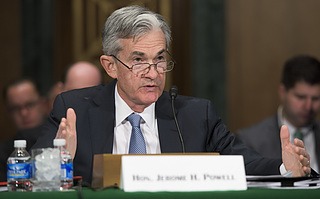The US Federal Reserve Bank met earlier this week (March 19 and 20) and their tone turned dovish, or pessimistic about future economic growth. Not only did the Fed leave the Fed Funds rate unchanged, they revised their forecast to say they anticipate no Fed Funds rate increases this year, and they announced they are curtailing the normalization of their balance sheet earlier than previously stated and short of the goal they previously stated. The Fed’s concern is that economic growth is slowing down, and so they revised their US economic growth forecast downward from 2.3% previously to 2.1% now.

Ramifications
Here are some of the ramifications that I believe will result from the Fed’s current position and more pessimistic economic forecast:
- Rates Will Remain Low: I believe and I have stated before that the Fed will not continue to raise rates so high that the yield curve will invert. Prior to the Fed’s meeting, the 10 Year US Treasury Note yielded about 2.6%. Now, after the Fed meeting, it yields 2.54%, after bottoming at 2.5%. Unless economic growth significantly outperforms the Fed’s forecast, there is no reason for rates to increase. Due to global geopolitical uncertainty as well as anemic growth in Europe and slowing growth in China, demand for the safe haven of US Treasuries will continue, which will put even more downward pressure on US rates. Get used to this low rate environment.
- Low Rates Are Good for Corporate Profits: Low interest rates means that companies’ borrowing costs and their cost of capital will remain low, which means that their profits will be boosted. Corporate profits grew due to changes in the corporate tax law in 2017, and while their growth rate is projected to slow, corporate profits will not be hurt by higher interest rates.
- Strong corporate profits are good for stocks. The low interest rate environment is also good for stocks going forward. There is always the danger that corporate profits won’t meet or exceed the high expectations put out there by Wall Street analysts. “Earnings Miss” is a frequent headline in the financial media. However, when you read about an “earnings miss”, read further to determine what the expectation was, then read what the company actually delivered, and then decide for yourself if the headline was truly bad or really should have been good.
- Inflation is not a concern of the Fed: Oil prices peaked in the low $70 per barrel range during 3Q 2018, then dove through 4Q 2018, and have rebounded to the $60 range, still lower than their 2018 peak. Wage growth is in the low 2% range and so within a comfort level with the Fed. The lower growth forecast means there is little catalyst for higher inflation.
- Good for Housing: Lower interest rates mean that mortgage rates should remain favorable and may even fall. Most every metric indicates that we have an undersupply of housing, particularly in some geographic areas. Housing sales and prices were weaker in 2018 due to higher (at that time) mortgage rates as well as because of the reduction in the ability to write off mortgage interest on one’s taxes. As a result, mortgage rates decreased a few ticks and will remain more favorable going forward. While housing growth may not blow it out of the park, I believe the housing sector will be ok and prices and sales volume should perk up for the remainder of 2019.
IMO
I am optimistic because the Fed has set a low bar for US economic performance, and the headlines should be good if the actual performance is better than the Fed’s performance. A low rate environment is good for a lot of sectors – corporate profits and housing among them. Savers won’t like it as much because savings coupon rates will continue to disappoint, but most of the economy will benefit.
